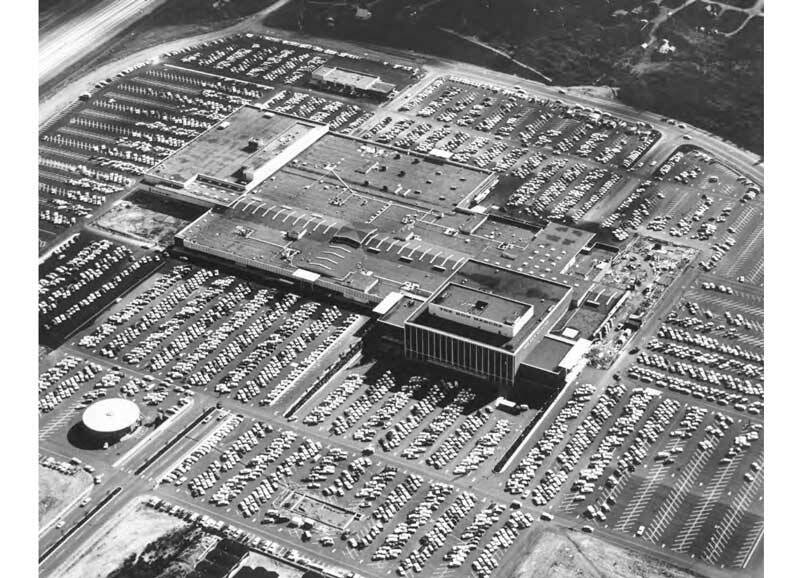By Morf Morford
Tacoma Daily Index
A funny thing happened when many of us, for a variety of reasons, began to do the bulk of our shopping online; we discovered that we actually like IRL (In Real Life) shopping.
Online shopping may (or may not) offer better prices, but if you need that item now, nothing beats going to a store, picking out the thing you need and buying it and using it right away. And before you even leave the store, you know if it is the one you want.
How many times have you ordered something online and you get something the wrong size or model or the item looks nothing like the photo or description?
Or how about when you need to purchase something with a very specific size or fit? Like shoes?
Nothing beats trying things on to make sure that they fit your size or purpose.
And no shipping cost!
Yes, I know that there is something near magical about having things delivered to your door.
But that assumes you are there to get it.
Before any porch pirates seize it.
And yes, I know about, and have used the Amazon drop off centers.
That was fun the first few times, but, like home delivery, the novelty is quickly wearing off.
The more I order online, the more it strikes me as sterile and mechanical.
And the more it reminds me of what I didn’t know I liked about IRL shopping.
Like most people, I like browsing, I like noticing other related (or even completely unrelated) items near by or along the way.
I like chatting with knowledgeable people. I like getting advice from the people I bump into while shopping for similar things. And I like trying things on.
And I like getting the thing that actually fits me and works for me. And, in most cases, I like getting it right now.
Philosophically I like shopping in the real world far better too.
It feels good to be supporting local businesses and keeping local people employed.
Did you know that, thanks to their, ahem, liberal return policy, items returned to Amazon, from electronics to shoes, most of the time, go directly to garbage or landfills? As you might guess, this is worse around the holidays. https://money.cnn.com/2017/12/26/news/retail-returns-landfill/index.html
Malls aren’t dying.
Malls, like all of us in these crazy times, are shifting and adapting.
But where we have shopped for the essentials (and not so essentials) has always shifted.
Back in the late 19th and early 20th centuries, America’s business and economic sectors changed dramatically. Agriculture — which had previously been the dominant business — was replaced by manufacturing and industry.
Oil, steel, textile, and food production in factories brought new jobs and new standards of living. And new ways of shopping.
With the rise of the middle class, and more successful and affluent Americans having broader tastes, department stores like Macy’s (1858), Bloomingdales (1861), and Sears (1886) began popping up in cities like New York City and Chicago. (The first cash register was invented in 1883).
In many cities you could even have an entire house (complete with nails and windows) in kit form delivered by Sears.
Sears and Montgomery Wards (among others) also pioneered catalog by-mail sales.
The stores didn’t just sell items.
They also provided demonstrations, lectures, and entertainment events that appealed to newly wealthy customers looking for advice not only how to spend their money and use the often new products, but, for better or worse, these customers learned from each other.
In other words, those department stores sold a value system, even a life-style.
Today people are still looking for more than the item they have in mind, they are looking for the social experience and unexpected encounters one only has in real life.
Paper or plastic?
How we pay for things has changed also.
Cash is great, but it can be awkward.
Can you imagine life before credit cards? How would you buy a piece of furniture or an appliance with cash? Some people had checking accounts and wrote checks, and before 1930, many employers paid their workers in cash.
In the 1920s, credit cards or “charge cards” began to take hold of the American shopper. The early version of these cards were usually issued by hotels or individual businesses and could only be used within their companies.
The first universal credit card that could be used at multiple establishment was the Diners Club card in 1950. The first bank-run credit card was started by Bank of America in 1958.
The first mall, as we would recognize it today, was opened in 1956 in Edina, Minnesota. Malls then and now are often anchored by a large department store (or two) with a cluster of other, far smaller, stores around it. Malls were based on the premise that everyone would have cars and access to a major central shopping center. Ample and free parking was a major attraction, and a welcome relief from the headaches of urban center parking.
Big box (single) stores emerged in the 1960s (usually outside of urban centers) and dominated until just a few years ago.
Many of us do what could be called hybrid shopping, we do some research online, and if possible, find a local retailer to make the final decision.
How we shop, what we want and what we expect from retailers has changed.
Some familiar, even historic, stores, from Sears to Victoria’s Secret are gone, while others, like Costco and Nordstrom are flourishing as never before.
Malls, like the rest of us, are adapting to different tastes, expectation and economic realities.





